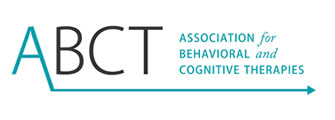
I’m in a small room, sitting on crinkly paper on a very tall, strange looking bed. There are weird gadgets around. Mom is sitting in the corner saying “You’ll be okay” but she looks scared. Why wouldn’t I be okay? What’s going to happen? Now this stranger in a white coat walks in and starts asking Mom questions. She’s looking at me with a smile and rolls up my sleeve. Why is she putting this elastic band thingy around my arm – ouch, it’s tight! She reaches into the drawer. Wait. What’s that sharp metal thing!? Why is she counting to three? MOM!
If you are a parent or have spent any time in a doctor’s office, you know how this can play out – cue the tears! Even as adults, we can probably recall some less than fond memories of a similar scenario. Needles can be scary.
What’s the big deal about being afraid of needles?
Procedures using needles are common and include flu shots, other vaccinations, and blood draws. These needle procedures do involve some level of pain. Roughly 2/3 of children (and 1/3 of adults) are afraid of needles. While some children undergo needles without much fuss, many others develop a fear of needles with potentially serious implications. In the short term, needle fear can result in more pain and distress during needle pokes. If unmanaged, needle fear can lead to avoidance of medical care, such as refusing needles (blood draws, vaccinations) when required. The good news is that there are strategies that we know work to reduce pain during needles. For those who are really afraid of needles, there are other things that can be done as well.
What can I do to help my child during a needle procedure?
General tips
- Be there and be calm.
- Educate yourself and your child: what will happen during the procedure, how it will feel, and how to cope (see strategies below).
- For vaccinations, ask healthcare professional to:
• avoid aspirating (pulling back the plunger before injecting).
• give the most painful vaccination last. - Have your child sit up-right.
- Use neutral words to the signal start of procedure like “The needle is about to go in”.
- Distract before, during and afterward. Here are some options:
- Talk about anything but the needle. “How was school today”, and “If you had the superpower of flying…”. You get the gist.
- Toys, tablets, phones (yes, screen time is recommended here).
- Breathing. For children aged 3-12, this can look like blowing bubbles, or breathing with a pinwheel.
- Topical anesthetics (e.g., Ametop®, EMLA®, Maxilene®). These external creams can be used to numb the area of skin that will be poked by the needle. Topical anesthetics can sometimes be bought over the counter at a drug store, or in some states may need a prescription. These have to be on the skin for up to 1 hour before the injection so they take some planning.
- Don’t reassure too much. Yes – you read that correctly. Repetitive comments that are intended to comfort children about their pain or fear can actually make things worse. Distracting comments will be most helpful – make a conscious effort to not keep saying “It’s okay”, or “Don’t worry.
Extra tips specific to infants (0-2 years old)
- Breastfeeding. If you are breastfeeding, it is recommended that you do so before, during, and after your child’s needle poke.
- If you are not breastfeeding, sugar water can be given before. Mix 1 tsp of sugar with 1 tsp of water and have your child drink it before the needle. Or, a pacifier can be used before, during, and after.
- Positioning:
- Skin-to-skin (0 to 1 month). Infant is in a diaper and held prone on the bare chest of the caregiver.
- Sitting upright in your lap.
What about children with high levels of needle-fear?
Fear of needles ranges on a spectrum from low to high. Children with lower levels of needle fear will benefit from the suggestions above. Children with high levels of needle fear may shake, cry, tantrum, flail, or try to flee during their visit to the doctor. High needle fear does not usually go away without intervention and gets in the way of the pain management strategies listed above.
For high needle fear, exposure therapy is recommended. Exposure therapy is a psychological intervention that involves a professional, like a clinical psychologist, who gradually exposes the individual to their fears in a controlled way. This therapy follows a “hierarchy” beginning with experiencing less-feared situations, such as a cartoon picture of a needle, and progresses to more and more-feared stimuli (e.g., toy needle, practicing injecting a stuffed animal, holding a real needle).
My child gets dizzy or faints during needles – what can we do?
Individuals who get dizzy or faint during needles are showing a vasovagal reaction which results from a drop in blood pressure. This reaction is more common in people with high needle fear but there is not 100% overlap. A technique called muscle tension is designed to keep blood pressure up and stop the faint. Muscle tension involves tensing major muscle groups (stomach, legs; not the arm where the needle is going!) for around 20 seconds and then releasing for 15-30 seconds (not relaxing). For more information on how to perform this technique see http://pphc.psy.uoguelph.ca/wp-content/uploads/Muscle-Tension-Resource.pdf
So what are the major take home messages?
Pain management during needles is important and we know what works. Most of the time simple strategies such as distraction, positioning, and preparation will work. People with high needle fear have to have that addressed first and then they can fully benefit from the pain management strategies.
Free Resources:
Clinical practice guideline – pain during vaccination (be sure to check out the appendices): http://www.cmaj.ca/content/early/2015/08/24/cmaj.150391
Clinical practice guideline – high needle fear (be sure to check out the supplemental material):
http://www.tandfonline.com/doi/full/10.1080/16506073.2016.1157204
http://phm.utoronto.ca/helpinkids/publications.html for more information on pain and fear management during needles.
Proper citation link for this blog post:
Moline, R.L. & McMurtry, C.M. (October, 26, 2017). Retrieved from http://infoaboutkids.org/blog/nervous-about-needles/
















